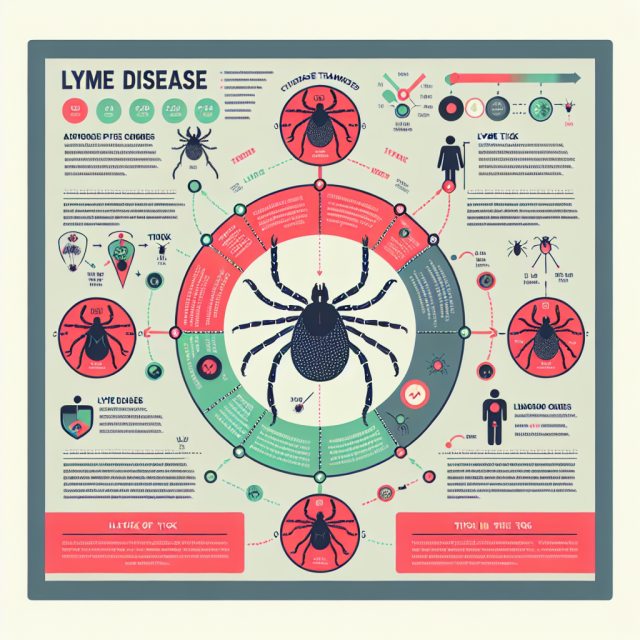
Table of Contents
Introduction
Lyme disease often feels like an unwelcome guest that shows up unexpectedly. If you’ve been diagnosed or suspect you have it, understanding Lyme disease causes is the first step in taking control. This tick-borne illness has its roots in a complex interaction between bacteria, the environment, and human behavior. Let’s dive into the key factors behind Lyme disease to help you feel more empowered and informed.
What Is Lyme Disease?
Lyme disease is a bacterial infection transmitted through the bite of an infected black-legged tick (commonly known as the deer tick). It can cause a wide range of symptoms, from fever and fatigue to joint pain and neurological issues. Understanding its origins is critical for both prevention and management.
The Role of Ticks in Lyme Disease Causes
Ticks are nature’s tiny hitchhikers, and they’re the primary cause of Lyme disease. When an infected tick bites a person, it transfers bacteria from its saliva into the bloodstream. The longer the tick remains attached—usually over 24 hours—the higher the likelihood of infection.
Understanding Borrelia Burgdorferi
At the heart of Lyme disease is a spiral-shaped bacterium called Borrelia burgdorferi. This pathogen is what ticks transmit, causing the inflammatory response that leads to symptoms. Think of it as the “villain” in this story—hard to detect and capable of evading your immune system.
Environmental Factors and Risk Areas
Your surroundings play a major role in your risk of developing Lyme disease. Heavily wooded or grassy areas, especially in regions like the Northeast and Midwest of the United States, are hotbeds for tick populations. Spending time outdoors in these areas increases your exposure.
Human Behavior and Exposure
Simple behaviors like hiking, gardening, or walking your dog can increase your risk of tick bites. Wearing shorts in tall grass might feel freeing, but it also makes you a prime target for ticks. Learning how to protect yourself is key.
The Role of Co-Infections
Ticks don’t just carry Borrelia burgdorferi; they can also transmit other diseases like babesiosis or anaplasmosis. These co-infections complicate diagnosis and treatment, often worsening symptoms or mimicking other conditions.
Delayed Diagnosis and Chronic Lyme
When Lyme disease isn’t caught early, it can lead to long-term complications. Chronic Lyme disease—or post-treatment Lyme disease syndrome (PTLDS)—occurs when symptoms persist even after initial antibiotic treatment. Early detection is vital to prevent this progression.
Preventing Lyme Disease
Preventing tick bites is your best defense. Here’s how you can stay safe:
- Wear Protective Clothing: Long sleeves and pants act as barriers.
- Use Tick Repellents: Products containing DEET or permethrin are highly effective.
- Check for Ticks: After spending time outdoors, thoroughly inspect your body and clothes.
For more prevention tips, visit HealingWell.
Why Lyme Disease Goes Undiagnosed
Lyme disease is often misdiagnosed because its symptoms mimic other conditions like the flu or fibromyalgia. Additionally, blood tests may fail to detect the infection in its early stages, leaving patients without answers.
Latest Research on Lyme Disease Causes
Emerging research focuses on the relationship between the microbiome and Lyme disease. Scientists are exploring how gut health impacts the immune response to Borrelia burgdorferi. These findings may lead to innovative treatments in the future.
Conclusion
Understanding Lyme disease causes helps you take proactive steps to protect yourself and your loved ones. From recognizing tick habitats to seeking early treatment, knowledge is your most powerful tool. Remember, while Lyme disease can be challenging, with the right care and precautions, you can regain control of your health.
FAQs
1. What are the main causes of Lyme disease?
Lyme disease is caused by the bacterium Borrelia burgdorferi, which is transmitted through the bite of an infected black-legged tick.
2. Can Lyme disease be transmitted person-to-person?
No, Lyme disease cannot be spread directly between people. It requires a tick vector for transmission.
3. Why does Lyme disease become chronic in some cases?
Chronic Lyme disease occurs when symptoms persist due to delayed diagnosis, incomplete treatment, or co-infections.
4. How can I reduce my risk of tick bites?
Wear long clothing, use insect repellents with DEET, and perform tick checks after outdoor activities.
5. Are there any vaccines for Lyme disease?
Currently, there is no widely available human vaccine for Lyme disease, but research is ongoing.





